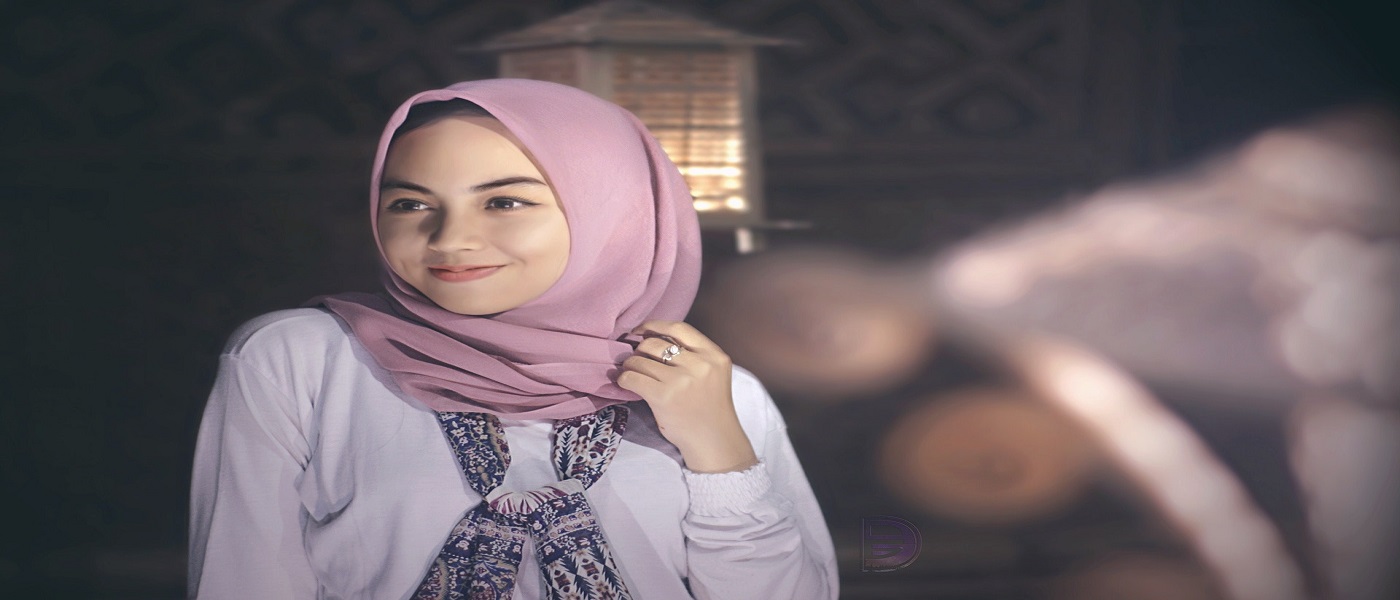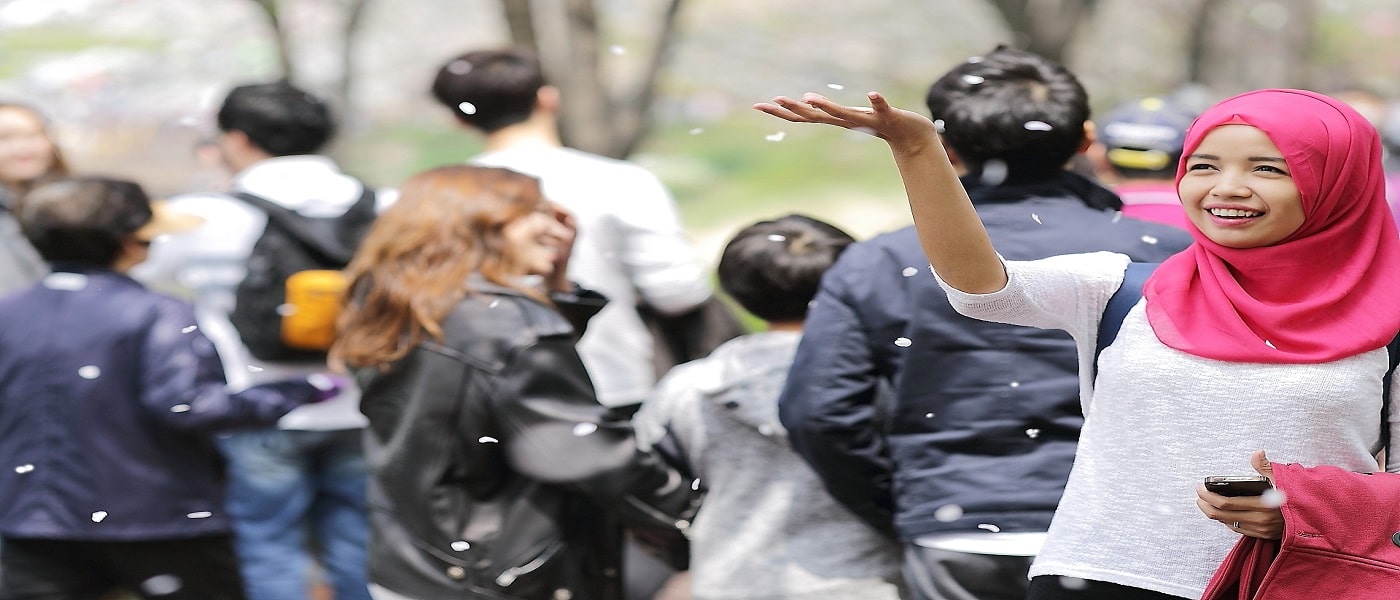

Why do Muslim Women Cover Their Hair?
In recent years, the scarf or Hijab in Islam that Muslim women wear on their heads to cover the hair has engaged many governments and has been among the headlines around the world. Since then, Hijab and covering the hair has been banned in certain government buildings, schools, and public services in some countries.
So the question is: what is that strong incentive that makes Muslim women even more resolute to maintain their belief in Hijab, despite all these controversies and conflicts?
Islamic Dress Code
According to most of the Islamic jurists, Muslim women are required to wear the clothing that covers their hair and entire body except the face and the hands, from the wrist to the fingers, in the presence of non-Mahrams or small boys whose consciousness of sex has developed or the evidence of sexual urge is noticed on them [1]. So, in the circumstances where non-Mahrams are not likely to be present, there is no need for Muslim women to wear Hijab in Islam.
In Surah Nur, women are ordered to “not expose their adornment except that which [necessarily] appears” (24:31). In a narration from Imam Sadiq (AS) and some other Islamic narrations [2], the hair is known to be an adornment for a woman, then, it is obligatory (Wajib) to cover it. The very first reason to veil the hair is, therefore, the commitment to the ruling on Hijab in Islam.
However, it should be noted that there has always been a natural tendency in human beings, especially in women, which made them not expose their body. This originates from an inner sense of modesty and decency which is stronger in women. Hence, the Islamic dress code is in complete accordance with the human nature.
Wearing Hijab in Islam and Mental Relief
It is evident that the beauties of a woman’s appearance, hair and body have always been appealing to men, and even women; that is why they usually appear on the advertisements to attract more customers for companies. On the other hand, women tend naturally to show their beauties and to get admiration. Men might be therefore easily appealed by the appearance of non-Mahram women, and this can eventually lead to a forbidden (Haram) gaze [i].
Committing a first forbidden (Haram) gaze and then consecutive ones affect both who looks (man) and who is looked at (woman). The one, who looks, remains thoughtful for a while by what he has seen and this may even last for days and weeks and lead even to some lustful thoughts. Also, one who has received a forbidden (Haram) gaze won’t be at ease and might feel her privacy invaded. So, both sides will be under some sort of stress and anxiety.
Since the two sides are both affected by a forbidden (Haram) gaze, women and men are equally required to take part to avoid such looks. To this kind of gaze and its consequent mental pressures, Islam orders women to cover their hair, and more generally their body. This is, in fact, the strategy to remove the external causes of sinful looks which concern women.
For the men’s part, they should participate by controlling their eyes. Forbidden (Haram) gaze is such that brings about one after the other. So, men are commanded not to follow the first unintended look by the second one; in other words, they should put an inner barrier to such looks.
Wearing Hijab in Islam and Social Effects
Islam has encouraged women to appear in the society modestly and with dignity. This is, however, something inherent in every woman. The more simply a woman is dressed and is dignified, the more she will be respected by men and will be protected from the harmful gaze. The after effects of a forbidden (Haram) gaze are not limited to the unpleasant feeling that it brings about.
Women who do not wear Hijab, including the ones who do not cover their hair, are more susceptible to such annoying looks at any time and anywhere, and this consequently makes them feel more “unsecured” in the society. Even in some cases, this might end in some sorts of sexual abuse which is a crime in every society.
Moreover, the Hijab of a body is the basis for other types of Hijab that are commanded in Islam and which have the same aim in the society. It means to invite the humans to modesty and dignity in order to guarantee a normal and equilibrated society. These kinds of Hijab offer a reference on how one should look at non-Mahrams, the way of talking with them and the behavior in their presence [ii]:
Hijab of the eyes, recognized as controlling the glance, which mainly concerns men (as discussed above);
Hijab of talking when dealing with non-Mahrams, which concerns both women and men. It is about using a serious tone of voice, caring about the words exchanged, considering the human identity of the other person other than his/ her gender, and just focusing on the subject and the purpose of the discussion. Otherwise, the goal of the conversation, either scientific, formal, social or working, won’t be achieved;
Hijab of the behavior that implies being decent and modest towards the opposite gender, in a way that the person with the lust in the heart cannot dare to violate one’s privacy (especially women’s privacy).
Another social effect of Hijab manifests itself in the family, as the basic unit of the society. In Islamic teachings, great importance has been given to the family as an influential institution of the society. Forming a family (through marriage) is known to be so dear to God as no other establishment [3]. Muslims are advised to satisfy some natural needs such as emotional and sexual ones, as well as beauty seeking desire only and only within the framework of the family.
This allows a regulated enjoyment of the beauties a woman has, accompanied with the commitment, which respects the principles of women’s rights. Besides, disobeying the Islamic ruling on Hijab in the society and exposing men to the feminine beauties in the streets, which would be tempting for them, is undesirable from the Islamic point of view. This makes the foundation of the family vulnerable and equally affects the relationship between the spouses.
Wearing Hijab in Islam, Covering the Hair and Being Recognized as a Muslim
Unlike previous religions, Hijab does not present a monastic attitude in Islam. Hijab in Islam follows certain social and individual purposes and helps one to live a better life. The Quran invites Muslim women to wear Hijab in order to be recognized as Muslims in the society and prevent being abused (33:59).
This becomes however suspended in case of distress and constriction [4]. The majority of Muslim women choose to wear Hijab to obey God and to be recognized by their intellect and minds rather than their physical appearance. They often believe that Hijab liberates them from the need to conform to unrealistic stereotypes and images dictated by the media [5].
They do not consider Hijab in Islam as a symbol of oppression but as a sign of Islamic consciousness. That is why they view it as a right and not a burden.
Notes:
[i] See “The Islamic Etiquette of Looking” for more info.
[ii] See the article “Hijab: the Real Meaning” for more details.
References:
- A. Aroussi Howayzi, "Tafsir Noor al-Thaqalayn", vol. 3/589, T. 105.
- H. Al-Ameli, “Wassail Al-Shia”, vol. 20, p.59.
- M. B. Majlesi, “Bihar al-Anwar”, vol. 103, p. 222.
- R. Mugehi, “Family religious precepts”, p.38
- Hijab in Islam
Share This Article

Hijab in the Abrahamic Religions
The term Hijab literally means a cover, curtain, or screen [1], and is generally associated with the Islamic rule regarding women covering certain parts of their body [i]. Considering this matter, one might face many questions and misunderstandings. Perhaps some of the fundamental and mostly asked questions are: “Is the concept of Hijab and the law of covering certain parts of the body for women limited to Islam?” and “Did such a concept make sense in the Abrahamic religions which existed before Islam?” One way of gaining a better understanding and a broader insight into this issue is through a detailed and accurate historical investigation of the characteristics and the treatment of Hijab in the Abrahamic religions of Judaism and Christianity.
Hijab in the Abrahamic Religions
1.Hijab & Judaism:
It seems that covering certain parts of the body and maintaining a modest demeanor for women in society was of much importance in Judaism. The manner of Shuaib [ii]’s daughters toward Moses, explicitly mentioned in the Holy Quran, can best illustrate the necessity of acting modestly in the society for women:
“When he arrived at the well of Midian, he found there a throng of people watering [their flocks], and he found, besides them, two women holding back [their flock]. He said, ‘What is your business?’ They said, ‘We do not water [our flock] until the shepherds have driven out [their flocks], and our father is an aged man.’ So he watered [their flock] for them. Then he withdrew toward the shade and said, ‘My Lord! I am indeed in need of any good You may send down to me!’ Then one of the two women approached him, walking bashfully [modestly]. She said, ‘Indeed my father invites you to pay you the wages for watering [our flock] for us.’ So when he came to him and recounted the story to him, he said, ‘Do not be afraid. You have been delivered from the wrongdoing lot’” (28:23-25).
Based on this account, it can be argued that at the time of Prophet Moses, women’s modest and demure behavior was regarded as praiseworthy and respectful and a sign of their high status and distinguished personality in the society.
Moreover, there are some verses in Torah that name different kinds of clothing -Burqa or a veil covering one’s face- used by women as a kind of Hijab. In the book of Genesis, for instance, as addressed to Judah’s bride we read:
“And she put off from her the garments of her widowhood, and covered herself with her veil, and wrapped herself, and sat in the entrance of Enaim, which is by the way to Timnah; for she saw that Shelah was grown up, and she was not given unto him to wife. When Judah saw her, he thought her to be a harlot; for she had covered her face” [38:14-15].
As Will Durant [iii] puts, a common tradition for women among Jewish tribes was to attend public places with head-covers. This practice had to be followed as a rule and transgression from it would bring some consequences including divorcing the woman without paying her marriage portion [2].
Appearing bare-headed and without any cover for women, in some societies -e.g., the Far East and Mesopotamia- was considered as the symbol of inferiority and the characteristics of lower social standings. Moreover, women regarded the act of uncovering their hair in front of public eyes as a huge humiliation, to the extent that this act was performed in punishing the women who were guilty of a crime. Also, according to some Rabbis, women’s attendance without a kind of Hijab in the religious ceremonies and rituals was strictly forbidden [3].
2. Hijab & Christianity:
From the chosen and highly respected women named in Islam, the Holy Quran directly mentions Blessed Mary, mother of Jesus Christ, the messenger of Christianity, as the embodiment of a chaste, modest, pure woman and a true believer in God. Her status is so high in Islam that one of the chapters of the Holy Quran has been given her name.
In addition, in many of the Christian paintings and portraits, the figure of the Virgin Mary has been depicted with a complete head-cover as well as a long loose dress. So, Christian women who follow their prophet’s mother and the laws of Christianity, have attempted to observe modesty and chastity in their social interactions. As Jurji Zaydan [iv] states: “If by Hijab we mean covering body, this practice was common before Islam and even before the emergence of Christianity and its effects still remain in the European societies.”
Furthermore, there is some textual evidence in the Bible that refers to this tradition and its necessity among Christian communities. In the Old Testament, the book of Genesis, it has been said:
“For she had said unto the servant, What man is this that walketh in the field to meet us? And the servant had said, It is my master: therefore she took a veil, and covered herself” [24:65].
And the need for head-covering in religious ceremonies has been emphasized by Saint Paul in the New Testament:
“Every man praying or prophesying with anything down over his head dishonors his head, but every woman praying or prophesying with her head uncovered dishonors her head—it is the same as if her head were shaven. For if a woman will not be covered, then let her be shorn! But since it is disgraceful for a woman to be shorn or shaven, let her be covered. … Judge for yourselves: is it proper for a woman to pray to God with her head uncovered?” [Corinthians 11:2-16].
The rule of celibacy for Christian priests and nuns -approached slightly different in the three main Christian denominations including Catholicism, Protestantism, and Orthodoxy [v]- though not accepted in Islam, is primarily and originally established to avoid worldly temptations and practicing self-restraint and modesty.
Also, the special kind of dress worn by nuns in churches which covers most parts of their body shows the emphasis of Christianity on the necessity of appearing with appropriate and non-provocative clothing in society.
Moreover, considering the paintings that portray western aristocratic females, as well as the literature of the pre-twentieth-century, it can be realized that wearing a suitable and modest dress by women represented their higher social standing and evoked the respect of other members of the society.
Up until the end of the nineteenth century, wearing hats and using long and decent clothing was common for women. However, with the passage of time, this tradition went through changes, and gradually the religious beliefs, and divine teachings of Jesus Christ faded away from their lives [5].
Nevertheless, in some eastern catholic and orthodox churches such as the Russian Orthodox Church, women are required to wear a head-cover when entering the church for attending religious ceremonies [6]. In addition, in Continental Europe and North America, most women of the Christian denominations including Anglican [7], Baptist [8], Methodist [9], and Roman Catholic [10] use a kind of head-cover when participating the religious rituals inside the church.
Conclusion
With a brief look at what has been said so far, it becomes evident that the religion of Islam was not the inventor of the Hijab, rather this tradition had existed and practiced in different forms among the followers of the two Abrahamic religions of Judaism and Christianity.
The parallels that one can find in the characteristics of the Hijab and the philosophy behind it in these three religions reveal the fact that in a way Islam has only modified and continued this tradition. According to Islam, also, the practice of wearing a Hijab is essentially aimed to preserve the human value and dignity of women when interacting with men outside the family circle and to provide a secure environment where everyone, man or woman, can perform their tasks effectively and morally.
Moreover, the kind of Hijab that Islam defines for women is covering all parts of their body except their faces and hands [from wrists to fingers] through wearing a modest dress, similarly, as we have seen in the previous paragraphs, Jewish and Christian women covered their head and were encouraged to wear non-provocative clothes. So, Islam, the last and most perfect religion, revised the rules of the preceding religions and completed the teachings of the previous prophets by providing thorough and applicable instructions.
Notes:
[i] Originally, the Quranic term used for this rule is “satr or satir—الستر، الساتر”
[ii] An ancient Midianite Prophet, sometimes identified with the Biblical Jethro. His name is mentioned in the Quran a total of 11 times.
[iii] William James Durant (November 5, 1885 – November 7, 1981) was an American writer, historian, and philosopher. He is best known for The Story of Civilization.
[iv] Jurji Zaydan was a prolific Lebanese novelist, journalist, editor, and teacher most noted for his creation of the magazine al-Hilal, which he used to serialize his 23 historical novels.
[v] In Orthodox Christianity “Priests and deacons may marry before ordination but not after. Bishops, on the other hand, must be celibate. While “the majority of Protestants do not require celibacy as a condition of election to the clergy.” Catholics, on the other hand, believe that “Priests and Bishops must be celibate, with the exception of Eastern Rite Catholics and Anglican married clergy who subsequently convert to Catholicism. These groups are allowed to have married priests” [4].
References:
- Rizvi, Sayyid Muhammad. n.d. Hijab, The Muslim Women's Dress, Islamic or Cultural? Ja‘fari Islamic Centre (Tabligh Committee) Canada.
- Durant, Will. n.d. The History of Civilization. Vol. XII.
- hijab
- HIjab in Abrahamic religion
- for more information about the changes in British women’s costume through ages visit: link
- Gdaniec, Cordula Cultural Diversity in Russian Cities: The Urban Landscape in the Post-Soviet Era.
- Muir, Edward (18 August 2005). Ritual in Early Modern Europe. Cambridge University Press. p. 31.
- Yearbook of American & Canadian Churches 2012. Abingdon Press. 2012-04-01. p. 131
- Morgan, Sue (2010-06-23). Women, Gender and Religious Cultures in Britain, 1800-1940.
- Henold, Mary J. 2008. Catholic and Feminist: The Surprising History of the American Catholic Feminist
Read More

Muslim Women in Society
Social life is one of the most important aspects of human life. From the beginning of the creation of humankind, people decided to live together in order to meet their needs. In this issue, the quality of women’s social participation is one of the fundamental concerns in every culture. let's see about Muslim Women in Society.
Islamic Standards for Muslim Women in society
One of the most notable points in considering this subject in Islam is the condition of Muslim women’s social participation. Muslim women and men are supposed to appear in society equitably. Muslim women just like men have the right to vote, to educate, to teach, to glitter in high political, scientific, athletic states, etc.
Islamic society is a place where no one is known and respected for his/her gender but for his/her virtues and morality. Gender should not be the first outward appearance of one’s personality. In this way, if a Muslim woman cooperates as a teacher, doctor, worker, etc. no one is allowed to consider her sex; rather people are supposed to pay attention to her occupation and knowledge.
In fact, all of us are human beings in society, not women and men. For reaching this utopia, everybody has some duties. God tells us not to underline sexual beauties and also not to look at and search for them. A safe society must make our minds free for more important activities. Such superficial challenges decrease our mental power.
Hijab: A Way of Revealing the Inner Beauty
In this regard women also have their own responsibilities. Islam wants women to have a safe and respectful position in society. This is one of the reasons why Islam asks people especially women to cover their bodies and not to show off their beauties.
That is because no one should look at a Muslim woman as a sexually beneficial object. God in the Holy Quran says: “O Prophet! Tell your wives and your daughters and the women of the faithful to draw closely over themselves their chadors [when going out]. That makes it likely for them to be recognized and not be troubled, and Allah is all-forgiving, all-merciful” (33:59).
It means that this beauty is so valuable that must not be seen or touched freely. But the main point is that there is another beauty which is more important and more valuable than this one, and that is the beauty of our personality, which can affect our appearance. Women must be known by their thoughts; God does not want women, these delightful, beautiful, and also powerful creatures to be just spectacular scenery for men. So, if women wear Hijab people will pay more attention to their inner beauties.
Hijab and Social Activity
By ordering Hijab, Allah is not to say Muslim women must stay at home because Hijab is social apparel, not a domestic dressing. It means women can take part in social activities. Nobody is permitted to have an offensive look at a woman as a sexual object but as a precious and respectful citizen.
There is no contradiction between progression and touching advanced states and wearing Hijab. The thing that Islam limits are the irregular, unconditional, and dishonorable relationship between women and men, the limitation of sensuality.
Hijab and Instinctual Pleasures
Allah has created sexual desire, and it is our natural disposition to satisfy it. Also, Allah has not prevented Muslims from joys. We as humans must legalize our pleasures. This natural instinct is to satisfy by marriage and with our spouse, not anyone else. Women are not born for being enjoyable and admirable for all men.
This attitude is extremely cruel toward women, and if a woman is not sexually attractive, she becomes worthless to society. In short, Islam always emphasizes the freedom of mind and the pleasure of heart in society rather than the freedom of sensuality and misuse of feminine sex appeal. On the other hand, this perfect religion has not ignored human instinctual pleasures, rather it has recommended us to fulfill them in a controlled and morally and legally acceptable way.
Read More

